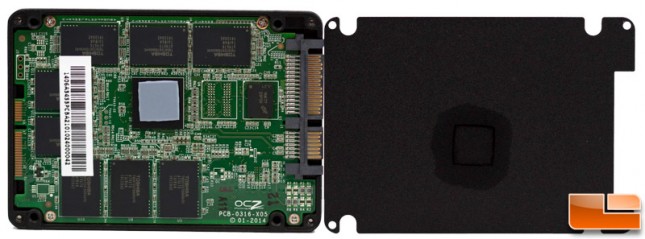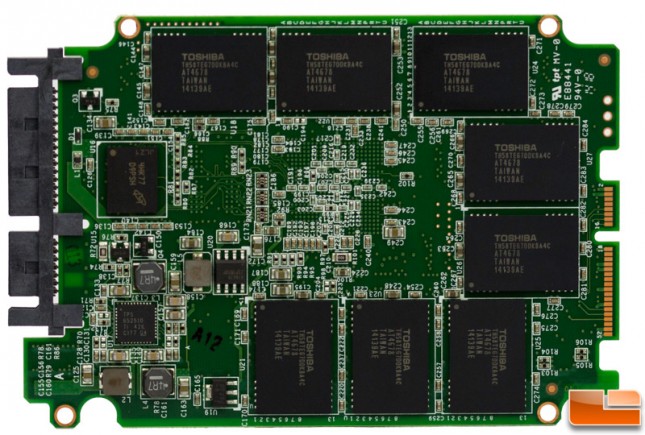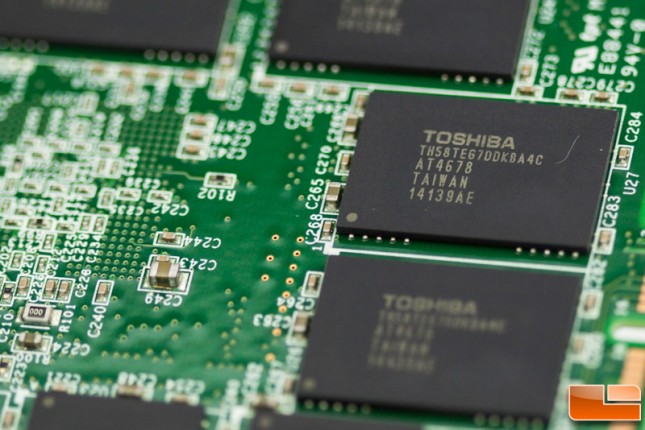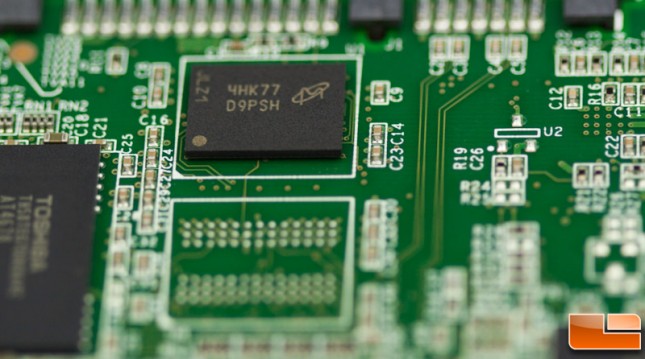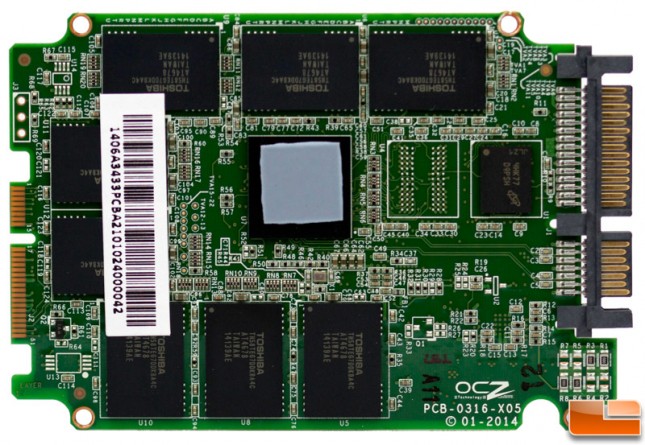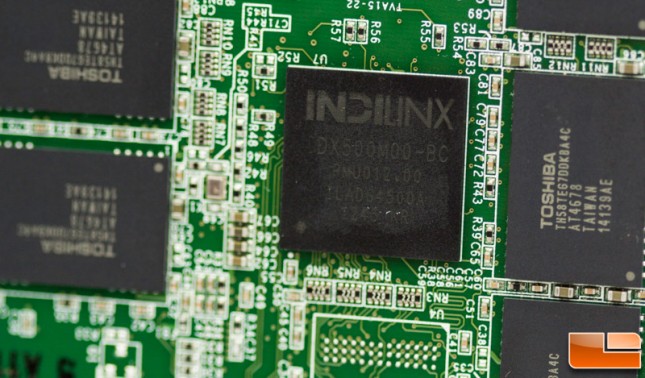AMD Radeon R7 Series 240GB SSD Review
A Closer Look at the Radeon R7 SSD:
As always, opening the drive requires the voiding of the warranty as there’s a pesky sticker in the way of one of the four screws that needs to be removed to gain access to the guts.
Once apart, we can see that there’s a thermal pad on the controller itself and four more screws that restrain the PCB from breaking free and ruining your day.
Looking at one side of the board, we find eight NAND chips and one cache chip arranged around most of the perimeter save for one corner.
A close look at the NAND reveals the Toshiba brand with part number TH58TEG7DDKBA4C which is the exact same part we saw on the OCZ ARC 100 drive and slightly different than that of the Vector 150 which was TH58TEG7DDJBA4C.
The DDR3-1333MHz DRAM cache chip is Micron part D9PSH which is again the exact same as found on the ARC 100 drive and for the 240GB model we have is 512MB total (256MB on each side). This holds true for the 240GB drive as well but the 480GB drive has a 1GB cache.
Flipping the board over, we see the remaining NAND modules, the second cache chip and the controller.
The OCZ Barefoot 3 M00 controller is the same found in the Vector series drives with part number IDX500M00-BC and reportedly runs at 397MHz. This is OCZ’s flagship controller that competes with the best in the industry although it may be about time for a refresh. It gives consistent performance regardless of the type of data being used and it supports TRIM and idle garbage collection. Plus, OCZ has done a nice job reducing write amplification through wear-leveling and optimizing the workload for mixed reads and writes. As such, it’s rated for 30GB/day of host writes for 4 years (under typical client workloads) which is way more than most would ever approach. It does offer 256-bit AES-compliant data encryption although no support for TCG Opal 2.0 although generally there isn’t a high demand for that feature on consumer level drives.

